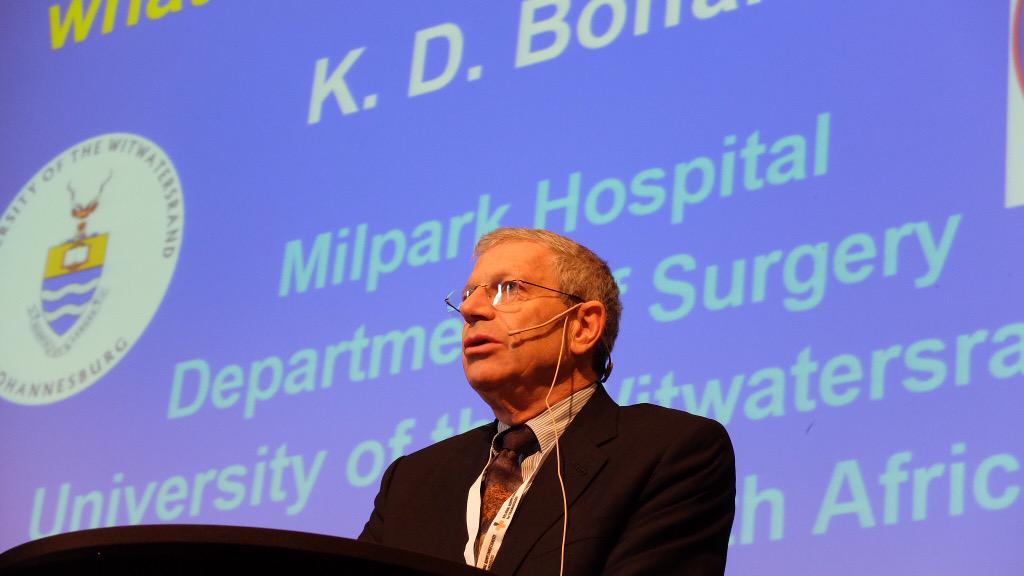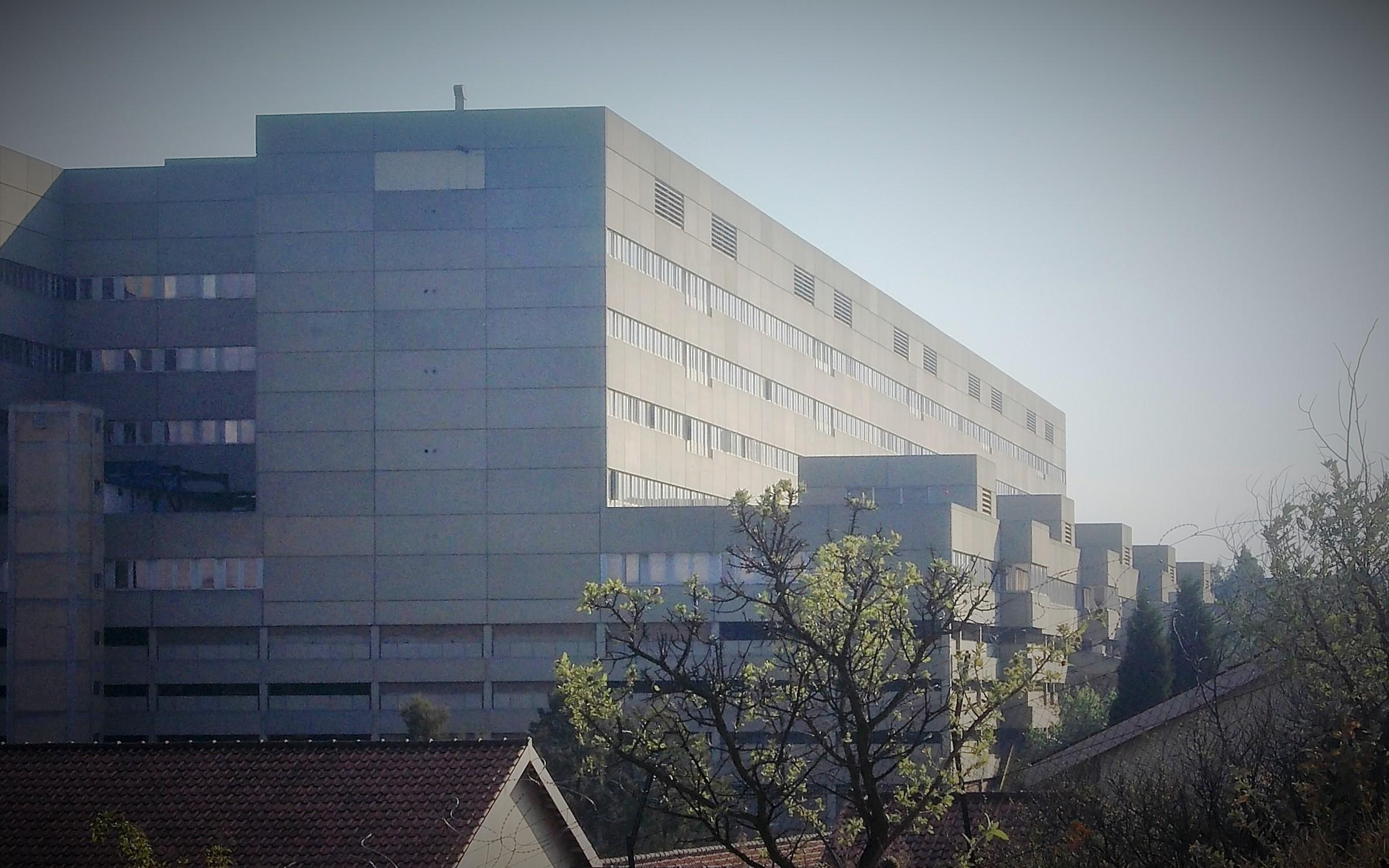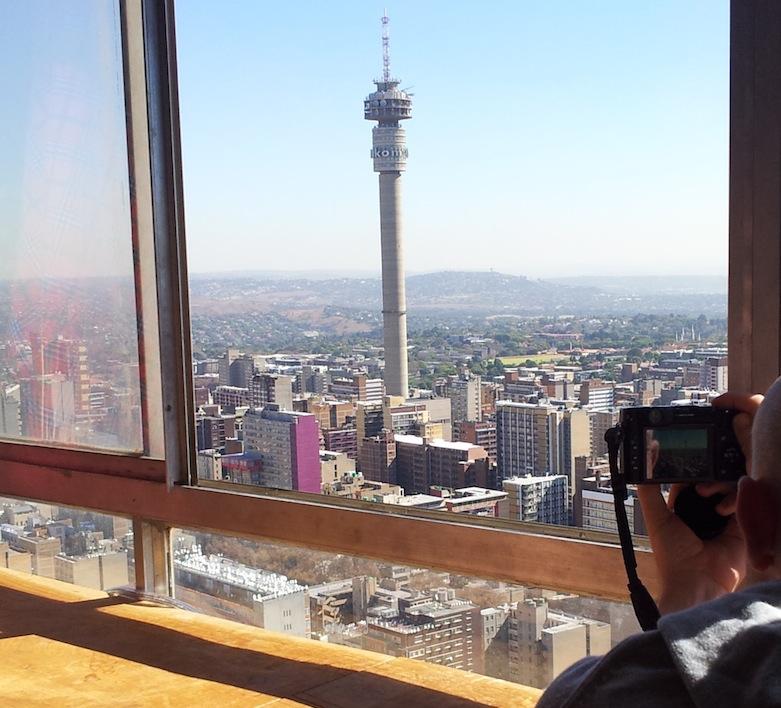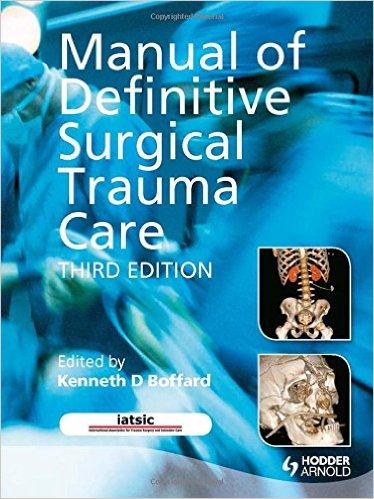
Disclaimer: Any views expressed by individuals and organisations are their own and do not in any way represent the views of The Heritage Portal. If you find any mistakes or historical inaccuracies, please contact the editor.
The article below forms part of Mike Alfred's series on Joburg personalities from the first decade of the 21st century. Click here to view Kathy Munro's fantastic introduction and here to view the series index. The stories were written in 2005/6.
During those terrible, destructive seconds in a microlight crash, the aircraft’s aluminium tail strut is driven through the pilot’s chest and out of his back, narrowly missing his heart. The strut has to be sawn shorter in order to load the man onto the ambulance helicopter. He’s flown to Johannesburg Hospital directly into the care of the Trauma Unit. Photographs of the man on an operating table put one in mind of the results of medieval jousts between lance bearing knights. One wonders, how can anyone survive such an accident? Today he’s flying again, once more instructing learner pilots. To what agency does that man owe his life? It’s a question that might well be asked by Joburg bomb victims during the eighties, by those hundreds of poisoned schoolgirls, by the survivors of the Ellis Park soccer disaster who were attended to and rendered safe, in a super efficient manner.
Johannesburg Hospital (The Heritage Portal)
Ken Boffard, Professor and Clinical Head, Department of Surgery, University of the Witwatersrand, which incorporates one of the world’s foremost trauma units, runs his departments from a small administrative complex on the seventh floor of the Hospital. His unit also assists with trauma handling at the nearby Milpark Hospital. A notice dangling from his office door advises people to beware the mad dog. But it’s in French and when asked, one of the secretaries admits she doesn’t know what it means. Later, having met the man, I reflect that he’s probably one of the most efficient managers I’ve ever encountered, focused, speedy and exact, a man who speaks clearly and precisely in beautifully modulated tones. As for the wild dog, I’ll probably never get within a mile of knowing, but there’s an itch which tells me that he’s a cool operator, more than ever so in a crisis, hardly a man who snarls. In the quiet of his office, he’s urbane and warm, not all that comfortable talking about himself, but more than happy to talk about the work of the world’s oldest trauma unit at Johannesburg Hospital.
There’s another warning on the door, adapted from San Diego Zoo, a flowering of synonyms admonishing people not to tease or irritate the boss. As if, with his quiet air of authority and his enormous reputation, anyone would dare?! The furniture is government-issue but it’s arranged stylishly. The space exudes importance. The surrounds are covered with paper: thanks from the White House medics, surgery Royal Fellowships from London, Glasgow, Edinburgh, a plaque from the Scottish Ambulance services, others from the British and US military, a framed Hippocratic Oath, pictures of helicopters in magic suspension. They promote the question, ‘Can he fly a helicopter?’ Yes he can, and furthermore he has the utmost respect for helicopter ambulance pilots who constantly execute miracles of flying rescues.
Gazing north into the haze one can faintly see the Magaliesberg. Boffard is familiar with the view. He tells me that his maternal grandfather lived in a grand home on the ridge where the hospital now stands. Grandad fled the pogroms in Russia at the turn of the 20th Century. The young man taught himself English by reading the newspaper every day. He built a great timber business, a gentleman of the old school whose simple handshake was his bond. Boffard ‘grew up in this area.’ His father was the well known Bob Ford on Springbok Radio.
Boffard schooled in Joburg and Natal, and qualified as a doctor at Wits. His surgical training was mainly received at Guy’s in London and his trauma work started at the Birmingham Accident Hospital, the world’s first true accident centre, established originally to treat the Arnhem parachute drop, casualties. How did he get to Britain in the first place? Odd story: as a dexterous undergraduate, he restored an old Bentley. During the process he located the only living previous owner, in Birmingham England. Once he had qualified he sold the car to visit the man in England ‘and stuck there for the following sixteen years.’ It’s a story that has probably attained mythic status, a step in the serendipitous progression of the Boffard saga.
I earnestly ask Boffard how his career began, was it planned or did it start by accident? I wince at the unintended pun. He digs me out, but provides only the briefest CV. ’It was indirectly by accident, because as a student I was very involved with the Sandton Fire Brigade which was all volunteers. I spent more time as a fireman than an ambulance person. Ambulance care in those days was pretty rudimentary. You were given a white coat and a vehicle and told to get on with it. And of course there were white ambulances and black ambulances and all that that implied. I developed an interest, as youngsters often do at that sort of age, 19, 20, 21, that sort of age you know, adrenalin and everything that that implied. I was an advanced driving instructor as well, which helped put me through medical school.’
When the now Dr Boffard, with his frontline experience of trauma management, visited the previous owner of the Bentley, he asked ‘whether there were any hospitals nearby that I could go and look at? He told me “Birmingham Accident‘s right next door to us.” So I went and introduced myself there and I worked there. It was fun. One thing led to another. I later trained as a vascular surgeon at Guy’s Hospital and in 1984, I got a phone call from the then Professor here [Wits & Johannesburg Hospital] who said they had a vacancy for a vascular surgeon and by the way, also a trauma vacancy, will you come back and do both? So I did. As they say: it seemed like a good idea at the time. Do I at this age enjoy getting up at night? No I don’t, but it comes with the trade.’ The trade, of course, means not one jot less than total commitment; that unreserved, above-and-beyond involvement, which allows me to suggest that Boffard’s a circumstantial workaholic.
We go back to the question, why medicine at all? He says, ‘I didn’t originally have anyone medical in the family. I just wanted to do it. I’ve always enjoyed working with my hands.’ I attempt further probing: what impelled Boffard, what skills, what philosophy, what morality? He replies: ‘I wonder how many people actually know what they end up doing? I interview a lot of trainee surgeons. I say, ”You’re now entering surgery, in five years time you’ll be a grown up surgeon; what do you want to be doing?” They say, “surgery.” And I say, “well, yes, and would you be interested in vascular surgery or bowel surgery?” And they say, “Well, I haven’t tried it yet so I’ll make up my mind as I go along.” And I think that’s the reality of eighty percent of us in that situation. I enjoyed working with my hands. My parents were divorced when I was young. My step father was a gynaecologist, and a very good one. He came into the family when I was thirteen. So I toyed with medicine. That gave me some direction and gynaecology sounded like a good idea. My school aptitude test informed me I should be a Civil Engineer…went into medical school really not knowing what I was letting myself in for, and loved it! One thing led to another. I’ve got a personality which calls for results if not instantly, sooner rather than later. Of course surgery lends itself to that.’ Boffard insists that he became a surgeon ‘because of a mechanical bias, because I like using my hands. I see surgery, particularly trauma surgery, as attempting to complete a complex jigsaw puzzle; putting the pieces back together and getting them to work again.’
So here’s the writer, who loves exploring the psychological why of careers, trying his frustrated utmost to understand why Boffard became involved in something which he, not in a million years, would ever entertain? And Boffard intimates in an almost offhand way, that’s the way it happened, it didn’t involve a great deal of conscious planning and consideration. So the writer differentiates the intuitive from the contemplative personality. He also realises that Boffard’s phrase ‘one thing led to another,’ is code for not only meeting every challenge that ever came his way, but also creating many of them. And, the writer deduces, that’s why hundreds, perhaps thousands of accident victims are alive and functioning today because Boffard didn’t much stop to think, but with consummate skill and tight emotional control, he swung into those immediate actions which plucked people back from the brink.
Being the modest man that he is, Boffard describes the role of the trauma surgeon in typical manner. He tries to play down the drama. I get the impression that he entertains little sympathy with the parallel TV world. His description is part generalization, but undoubtedly intertwined with his own experience: ‘A trauma surgeon is absolutely not to be confused with a casualty doctor. He’s a qualified surgeon, but over and above that, he’s got specific decision making skills in the management of major injuries. Anyone can deal with a cut finger, but when you have somebody who’s injured their head and their chest and their knee, he decides which takes priority. He’s something like a ringmaster in a circus. He or she oversees a number of different acts that he is not necessarily capable of doing, but which need to be coordinated.
I query the ‘not capable,’ and Boffard replies, ‘If you have a bad head injury with a bleed inside your brain, yes, of course I’m capable of doing it, but fortunately we have neurosurgeons who are far better trained than I. It’s the same with the bone surgeons. If you’ve got what we would euphemistically call a Rice Crispies leg because it goes snap, crackle and pop when you move it, I’m very grateful for my orthopaedic colleagues being there and doing it. My realm is vascular and abdominal surgery. So if somebody shoots you in the tummy, clearly I would be involved. But if you are shot in the tummy and the leg, I’ll get an orthopaedic colleague to come and sort the leg out while I’m sorting out the tummy.’ Is this trauma repair carried out on different parts of the body, coincidentally? ‘Yes.’ It appears that in serious cases, time is of the essence. Multi tasking is important.
‘And then the aftercare falls squarely under me, because that’s when you have the different specialities pulling in... the brain surgeons will want one set of treatments, the orthopods another, and you have to find a middle ground where... So we have to have a working knowledge of the different disciplines.’
We explore the temperament necessary to deal with the blood and guts and the emotional pressures associated with trauma surgery. Or more simply, what makes a good trauma surgeon? Boffard asks, and answers an even tougher question, ‘What stops a trauma surgeon from going crazy? It’s the ability to rationalize that you generally can’t make the patient worse than he or she already is. If you come to me with a bullet wound and I know what the risks are and the balances, I’m going to be right most of the time and I have to have the confidence to know that. I have to have the humbleness to know I’m going to be wrong some of the time and I must be able to rationalize that because if I’m wrong some of the time, it doesn’t make me bad. Do I lie awake at night wondering whether I’ve done the right thing? Yes, sometimes! Have patients suffered by my decisions? Yes they have; thankfully not that often, and as experience substitutes for enthusiasm, less often than before. I don’t go mad, because I’m able to rationalize what I do. You can’t be imaginative in this field of trauma surgery. You must be confident enough to make decisions without necessarily having adequate information. Medicine these days is more and more a matter of “let’s wait until we have the results of this scan or that test,” and if you happen to be bleeding to death at the time, one doesn’t have that luxury. Therefore you call the shots based on training, on experience.
‘I’ve got to have insight into communications. As a trauma surgeon, I don’t go out to recruit you, the patient. You, through no choice of your own are dumped in my lap. We have to establish a rapport; if you like, after the event, rather than before. That requires a particular sort of personality, one that is overtly strong enough to be able to instill confidence in a very unhappy, very insecure patient or, in the patient’s relatives.
‘And then you must have, and this is something I’ve only learnt as time has gone on, an ability to bring people into a team. Trauma’s not a one man job. You’ve got so many people to work with. I tease people by saying that trauma surgery embraces the oxymoron: benign dictatorship. “The only way I’ll stay benign, is if you’ll let me dictate!” I have to listen to opinions, but ultimately I must dictate what will happen and accept responsibility for that. It’s not necessarily fast decision making, but pressured. Invariably it’s in the middle of the night, or on weekends. Trauma is a social disease to a large extent; related to leisure time activities. It happens when people are not working.’
Boffard’s unit handles some 2000 serious trauma cases a year. The good news is that severe trauma has declined by 25% in Gauteng during the five years leading up to 2004, but the picture of social mayhem is still shocking. He says, ‘Ninety per cent of pedestrian accident victims are drunk. Sixty per cent of our car accident victims are over the legal limit, and eighty per cent of the victims of interpersonal violence are over the limit. Crime accounts for far fewer gunshot wounds than friendly brawls. Victims report, “My friend shot me…” What they don’t report is, “after a few drinks.” Nearly a hundred per cent of our major vehicle accident victims were not wearing seat belts, or were sitting in the back of the vehicle from where they were ejected.
‘South Africa has two epidemics, Aids and Trauma. Money is extremely limited. It’s a big problem. No country can sustain an epidemic for long. There‘s no question that had we more money, we could treat Aids better, we could treat Trauma better. There is no question that patients in South Africa die every day because of inadequate facilities and inadequate basic training.’
But Boffard has no regrets about returning to South Africa. He’s learnt that nowhere, but nowhere, is the medical grass greener. His extensive international experience allows him to assert that every country has problems, that healthcare is rationed in most places; some of it financially, some of it geographically, some intellectually. ‘In Australia, there’s lot’s of money but heaven help you if you have your accident in the Outback. And not just in the Outback; I looked at a disaster in a wine growing area, 45 children in a bus got hurt. It took the first ambulance six hours to get there because it was six hundred kilometers away. And the next ambulance took eight hours to get there, and it was at night so the Flying Doctor couldn’t get there either.
‘In South Africa there is geographic, intellectual and financial rationing. In the major cities the care you’ll get is as good or better than you’ll get anywhere in the UK. Go five kilometers outside the cities and you’re in the third world, and your survival is a matter of luck.’ Soweto? ‘Well Soweto’s on the borderline. Baragwanath is an excellent hospital but Soweto’s difficulties are primarily ones of communication and access. Relatively fewer people have cars or telephones although the cell phone is helping. But here at Johannesburg hospital we’re among the world leaders in providing attention. The average time between a gunshot wound sustained in Hillbrow and reaching this hospital is seven minutes. Because what happens, is that a car is hailed, or a taxi, and the victim is thrown in the back and driven here. And that matches the inner city situation in the United States. In Soweto it can take significantly longer to get to what is a good hospital.’
Hillbrow from above (The Heritage Portal)
Nevertheless, trauma victims in Joburg are more fortunate than those in other parts of the country. Despite a creaking ambulance service the road network is good and the city boasts the only doctor based helicopter service in Africa. Johannesburg and Millpark hospitals provide a trauma service recognized internationally as being among the very best in the world. This fortunate state of affairs largely stems from the juxtaposition of sophisticated medical facilities alongside extensive, developing country, social problems.
Another positive factor, although it could easily be perceived as negative, is the sufficiently numerous opportunities to enable trauma staff to hone and enhance their competence. By contrast, the relatively low levels of traumatic accidents processed by European hospitals leads Boffard to note that generally, they are poorly handled. At Johannesburg Hospital all major trauma procedures are videotaped and reviewed with those surgeons gaining experience. A senior trauma surgeon is resident in the hospital around the clock. His or her presence is inestimable not only in direct interventions, but in boosting the morale of surgeons-in-training. Local techniques are recognized as being so good that Boffard’s group trains British military doctors in the team approach to trauma. The unit’s outreach programme has already trained 3000 Indian doctors, at the rate of 800 a year, to make strategic decisions in the absence of sophisticated services and facilities. Doctors working in remote areas of Swaziland, Nigeria and Uganda have similarly benefited. Boffard has edited the Manual of Definitive Surgical Trauma Care a guide book used throughout the world, compiled by a group of international experts.
Book Cover
What, for this man, dedicated to a point close to sacrifice, are the opportunities for family time and leisure? ‘My wife’s a GP. There’s absolutely no question, I couldn’t do what I’m doing without my wife’s support. A lot of medical families break up; particularly when the family responsibilities increase. One spouse starts to resent the absence of the other. The husband wants to come home and talk shop or he’s too exhausted or… but I’ve just been very fortunate. I’ve got a sounding board, I’ve got someone who gives me direction. The condition is that I take time off with the family. We go into the bush, game and bird watching.’ Boffard enjoys living in Joburg which has a great ‘buzz’ for him; an ‘African city, filled with music, not a little Europe.’ This is a reference to Cape Town, illustrating the rivalry between these two premier South African cities.
‘My children are certain only about one thing… that they will have absolutely nothing to do with medicine or its lifestyle. My wife is a very caring GP. When she’s dealing with a very ill patient she’ll comes home stressed, difficult for the children to deal with, and of course she’s on twenty four hour call. So it comes from both of us.’
After a departmental training course one night, one of the trauma unit sisters entered her home to be shot by an intruder. The bullet blew away her eye and its bony socket. As a victim, she experienced the rapid response and expert care that she had offered so many. In time, her shattered eye socket was invisibly bolted together. Her eye was replaced by a coral orb fronted by a contact lens. The muscles reattached to the orb, almost miraculously bestowing mobility of the eye. Her beauty was restored. Considering examples such as this, may we offer due consideration to the work of internationally recognized Trauma Unit manager and surgeon, Ken Boffard, and his colleagues at Johannesburg Hospital.
About the author: Mike has spent most of his life in Johannesburg. He earned his living as a human resources practitioner, first in large companies as a manager, [many stimulating years with AECI] and later in his own small HR consultancy. Much of his later occupational time was spent running training courses for managers on how to handle staff within the framework of South African labour legislation, He wrote and published The Manpower Brief, an IR, HR and sociopolitical newsletter, which was popular in many large companies during the 80s and early 90s. A selection of Briefs were incorporated into the book, People Really Matter published by Knowledge Resources. While working, he wrote several business books, one of which, on negotiating, was a sell-out.
In his ‘retirement,’ he has written extensively about Johannesburg, publishing articles mainly in The Star and Sunday Times. Working with Beryl Porter of Walk & Talk Tours, he developed and guided many walking tours around historic Joburg – Braamfontein, Parktown, Newtown, Centre City, Constitution Hill, Kensington & Troyeville, Fordsburg etc. He regularly took visitors to Soweto. His book Johannesburg Portraits – from Lionel Phillips to Sibongile Khumalo, offered popular biographical essays of well known Joburg citizens. His researched paper on Judge FET Krause who surrendered Johannesburg to Field Marshall Roberts during the Anglo-Boer War, was published in the Johannesburg Heritage Journal. The same journal published his series on famous local paleoanthropologists.
Mike is also a widely published poet. Botsotso recently published his third book of poetry, Poetic Licence. His current historical work, published by co-author Peter Delmar of the Parkview Press, The Johannesburg Explorer Book, takes readers on a journey through old Johannesburg, weaving together a history of events and people, which make this city such a fascinating place. His most recent book, a work of journalism, Twelve plus One, featuring transcribed interviews with Johannesburg poets was issued in 2014.
He lived with his wife Cecily, in a century old, renovated house on Langermann Kop, Kensington. A widower since July 2014, he now lives in Eventide Retirement Village in Muizenberg. He believes himself very fortunate in that his son, daughter in law and grandsons live nearby. His daughter lives in Sydney with her husband and son. In case you’re wondering, Luke Alfred, Mike’s son, is the well-known journalist and author.
Comments will load below. If for any reason none appear click here for some troubleshooting tips. If you would like to post a comment and need instructions click here.



